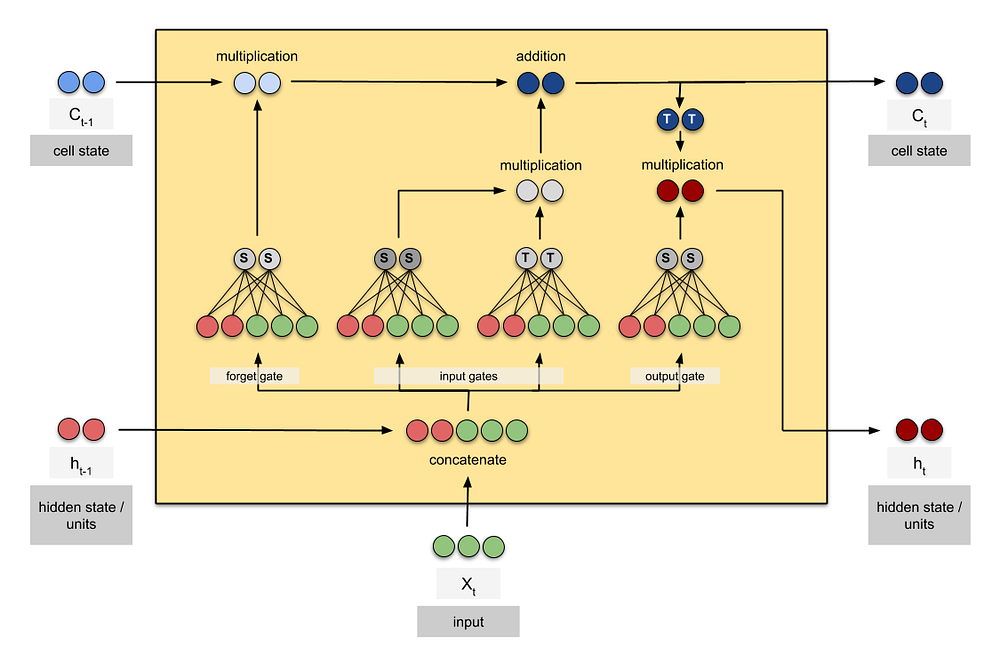问题
I'm having some difficulty understanding the input-output flow of layers in stacked LSTM networks. Let's say i have created a stacked LSTM network like the one below:
# parameters
time_steps = 10
features = 2
input_shape = [time_steps, features]
batch_size = 32
# model
model = Sequential()
model.add(LSTM(64, input_shape=input_shape, return_sequences=True))
model.add(LSTM(32,input_shape=input_shape))
where our stacked-LSTM network consists of 2 LSTM layers with 64 and 32 hidden units respectively. In this scenario, we expect that at each time-step the 1st LSTM layer -LSTM(64)- will pass as input to the 2nd LSTM layer -LSTM(32)- a vector of size [batch_size, time-step, hidden_unit_length], which would represent the hidden state of the 1st LSTM layer at the current time-step. What confuses me is:
- Does the 2nd LSTM layer -LSTM(32)- receives as
X(t)(as input) the hidden state of the 1st layer -LSTM(64)- that has the size[batch_size, time-step, hidden_unit_length]and passes it through it's own hidden network - in this case consisting of 32 nodes-? - If the first is true, why the
input_shapeof the 1st -LSTM(64)- and 2nd -LSTM(32)- is the same, when the 2nd only processes the hidden state of the 1st layer? Shouldn't in our case haveinput_shapeset to be[32, 10, 64]?
I found the LSTM visualization below very helpful (found here) but it doesn't expand on stacked-lstm networks:

Any help would be highly appreciated. Thanks!
回答1:
The input_shape is only required for the first layer. The subsequent layers take the output of previous layer as its input (as so their input_shape argument value is ignored)
The model below
model = Sequential()
model.add(LSTM(64, return_sequences=True, input_shape=(5, 2)))
model.add(LSTM(32))
represent the below architecture
Which you can verify it from model.summary()
_________________________________________________________________
Layer (type) Output Shape Param #
=================================================================
lstm_26 (LSTM) (None, 5, 64) 17152
_________________________________________________________________
lstm_27 (LSTM) (None, 32) 12416
=================================================================
Replacing the line
model.add(LSTM(32))
with
model.add(LSTM(32, input_shape=(1000000, 200000)))
will still give you the same architecture (verify using model.summary()) because the input_shape is ignore as it takes as input the tensor output of the previous layer.
And If you need a sequence to sequence architecture like below
you should be using the code:
model = Sequential()
model.add(LSTM(64, return_sequences=True, input_shape=(5, 2)))
model.add(LSTM(32, return_sequences=True))
which should return a model
_________________________________________________________________
Layer (type) Output Shape Param #
=================================================================
lstm_32 (LSTM) (None, 5, 64) 17152
_________________________________________________________________
lstm_33 (LSTM) (None, 5, 32) 12416
=================================================================
来源:https://stackoverflow.com/questions/55385906/whats-the-input-of-each-lstm-layer-in-a-stacked-lstm-network